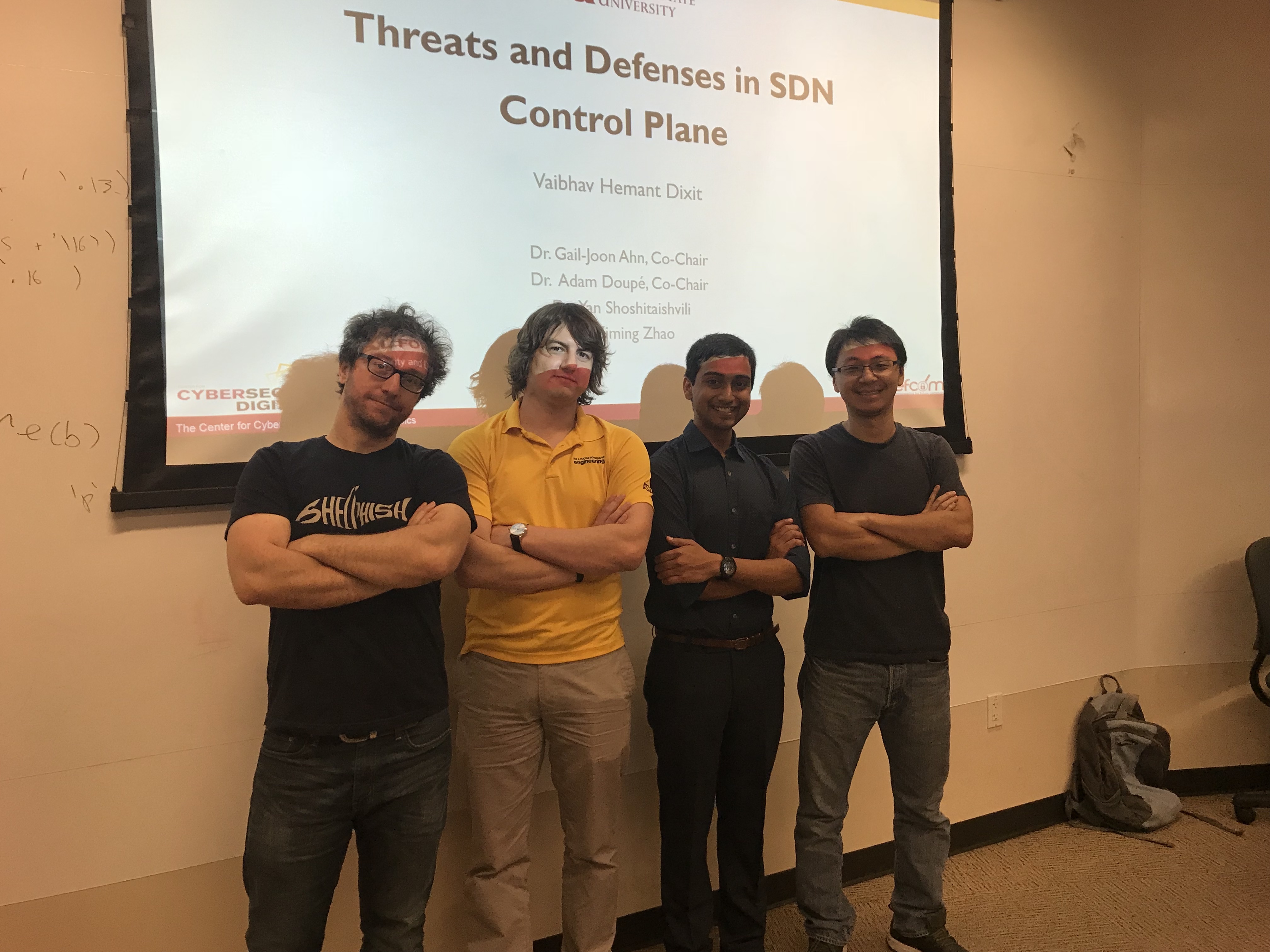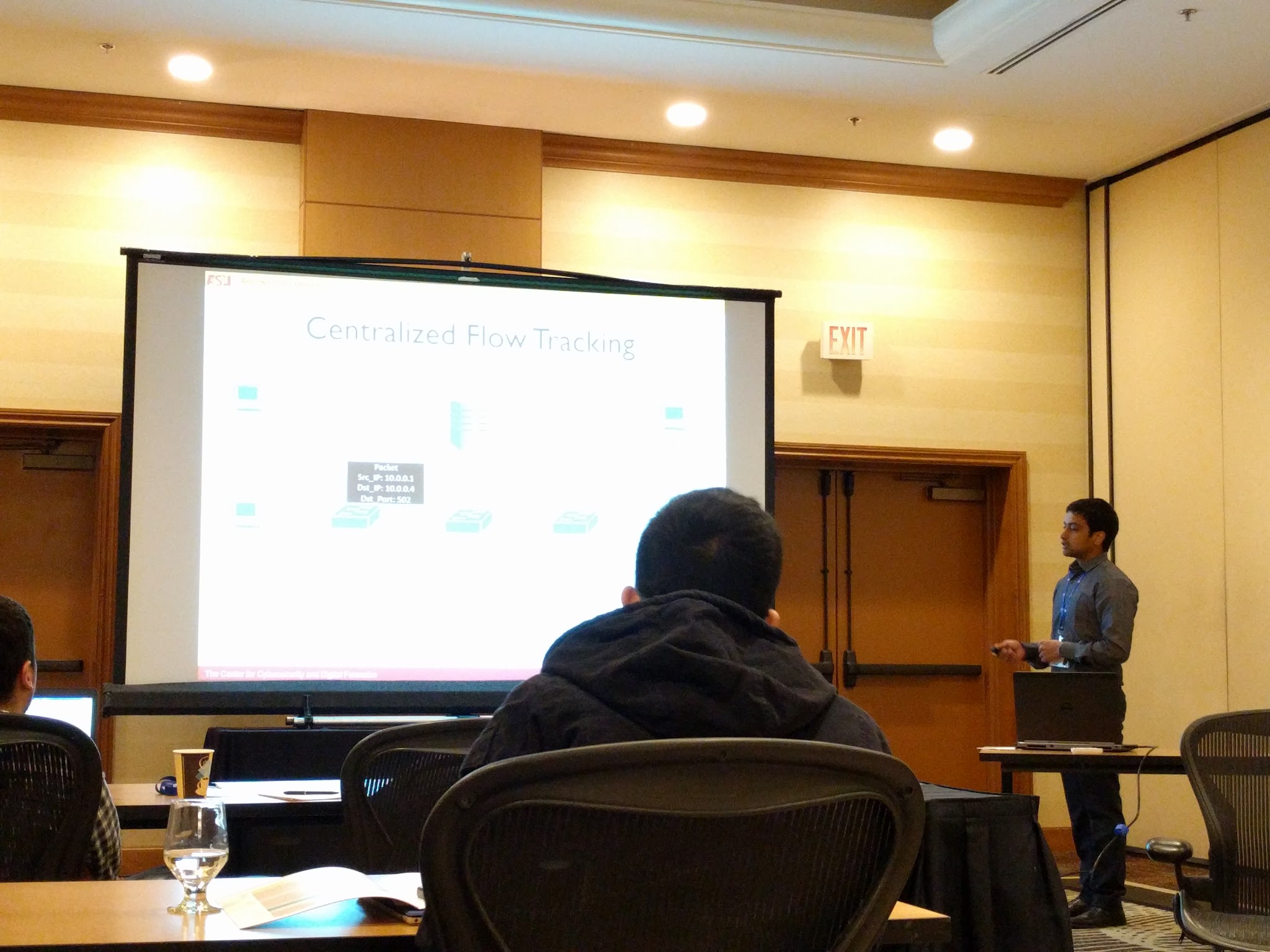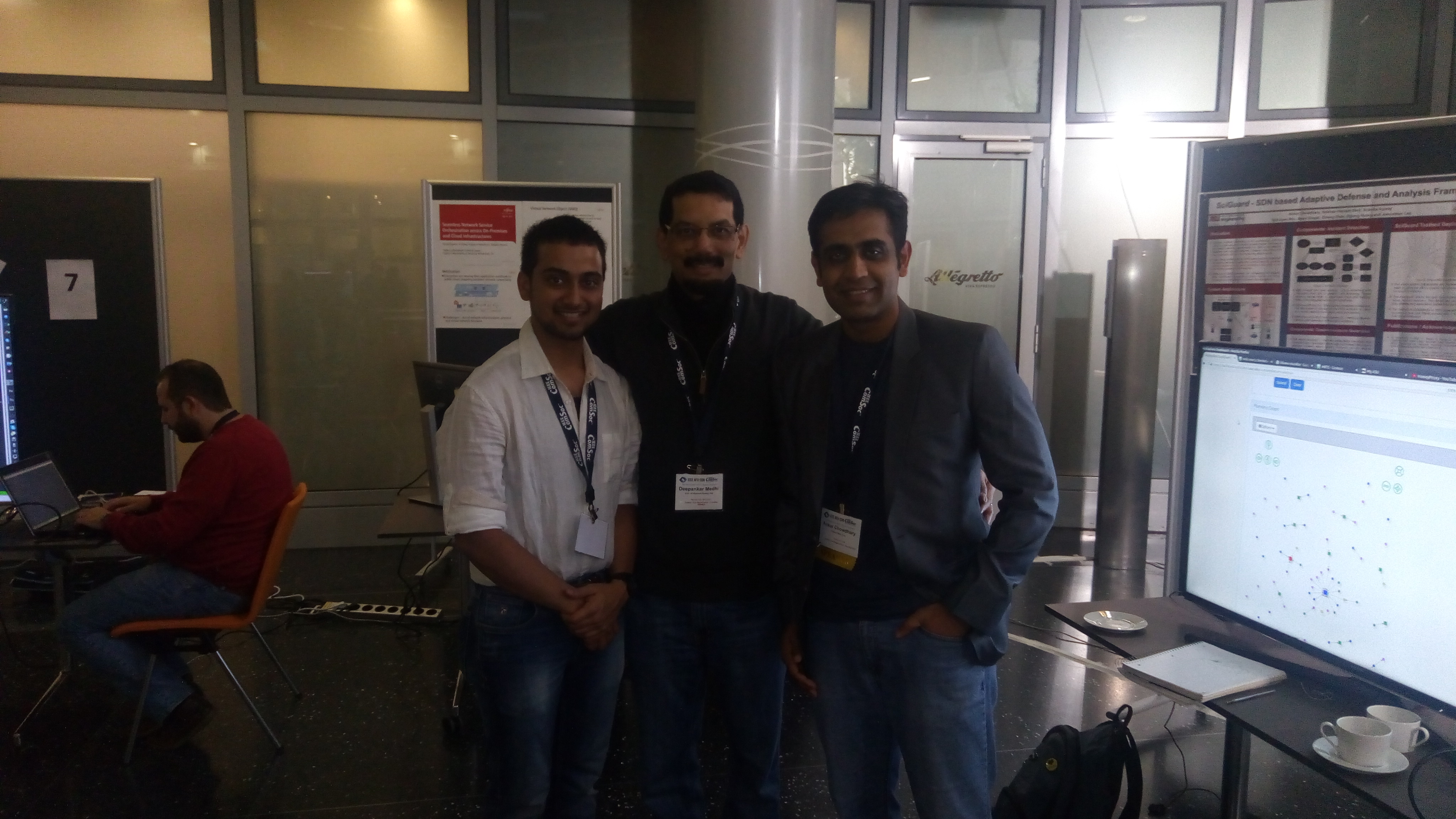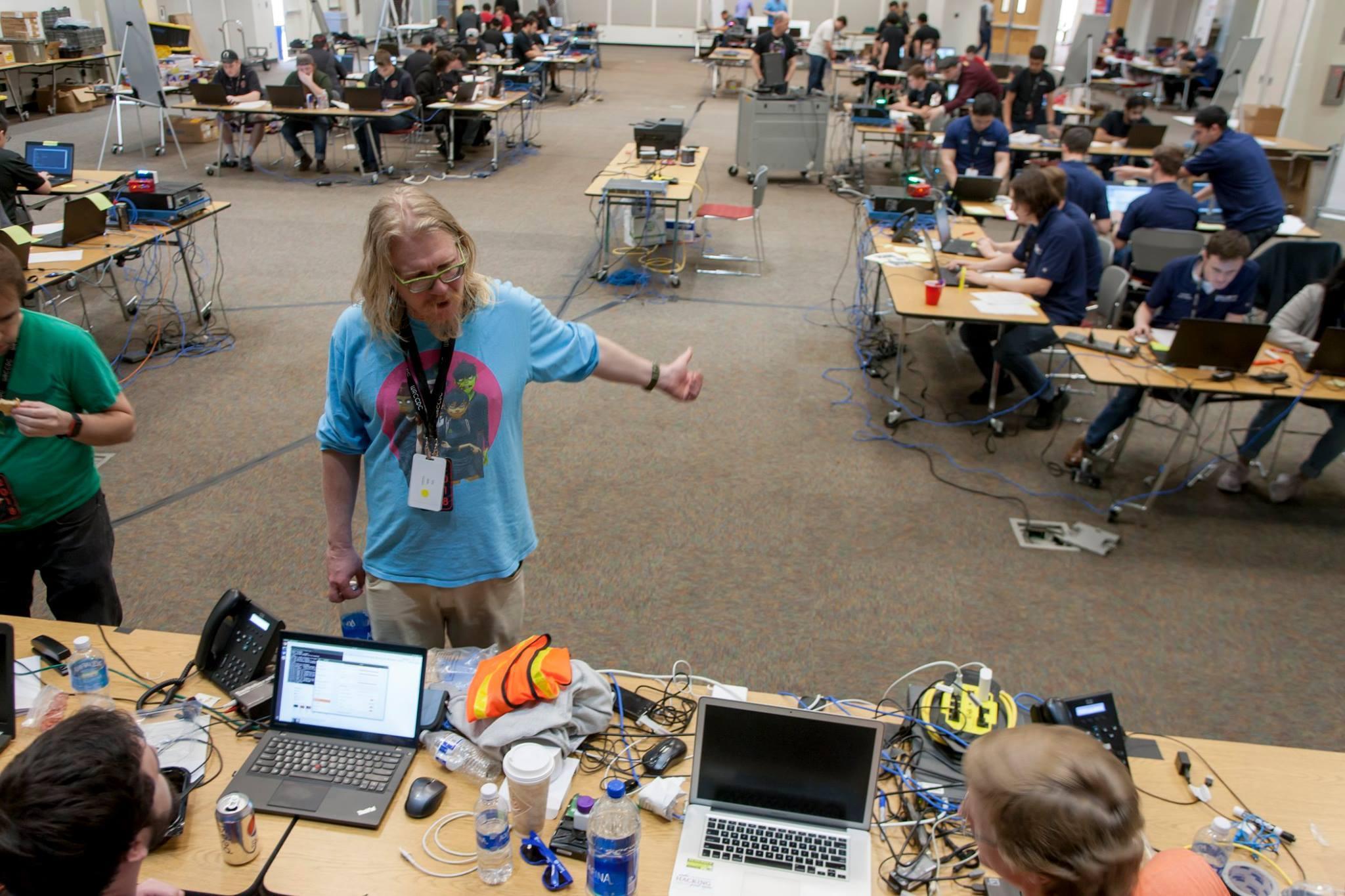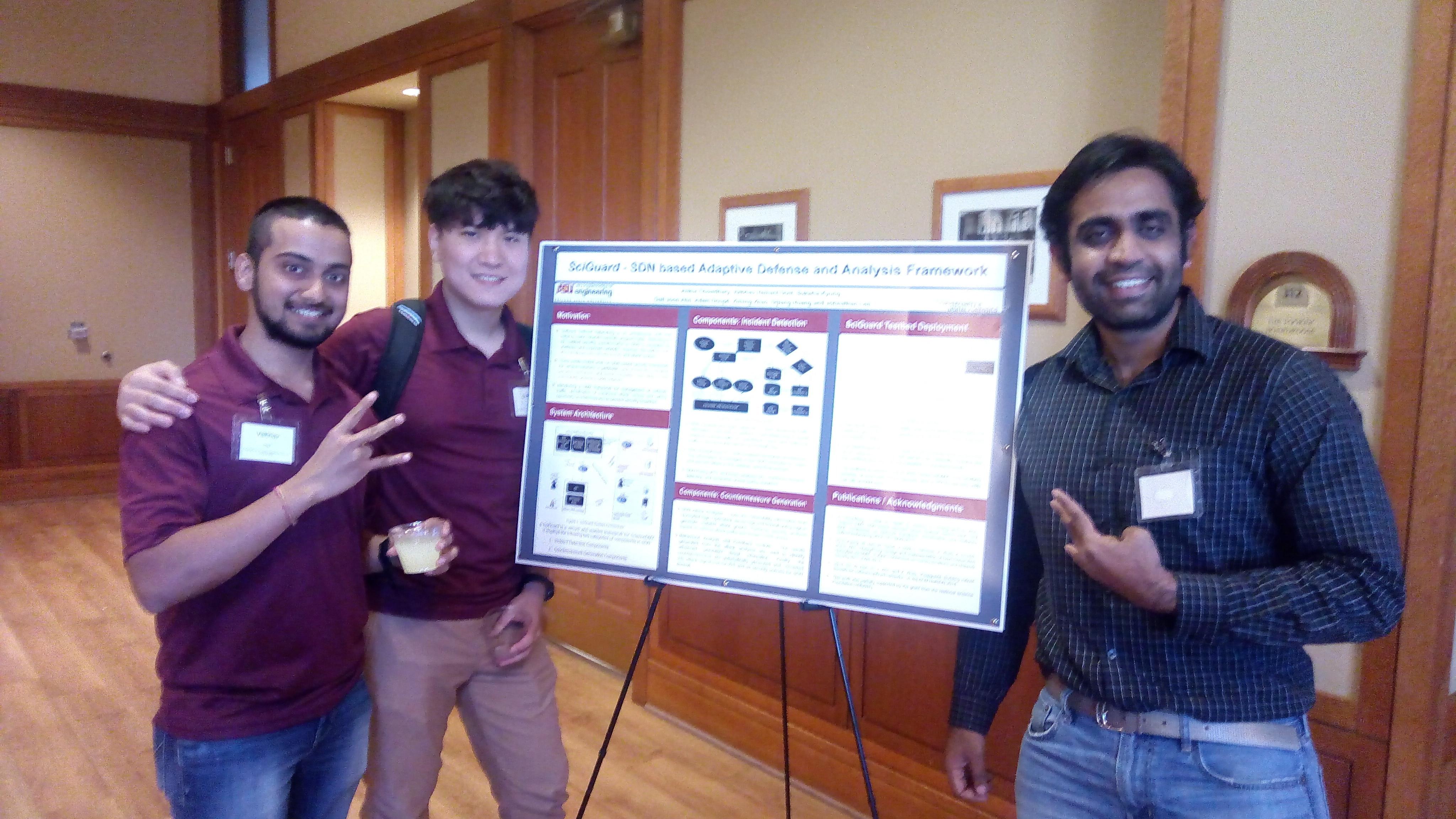Hi I'm Vaibhav Hemant Dixit
Software Engineer and Cybersecurity enthusiast
A software engineer at Comcast Corporation, I am a part of network architecture group and work with some amazingly talented people in the field.
Together, we are engineering a smart-next-gen security solutions for the datacenter-based Software Defined Networks (SDN).
I earned a Master of Science in Computer Science from Arizona State University in June 2018 after successfully defending my thesis under the supervision of Dr. Gail-Joon Ahn
and Dr. Adam Doupé.
As a Research Assistant, I have collaborated with some of the smartest mentors and students at The Laboratory of Security Engineering for Future Computing.
Before joining ASU, I have also worked as a Software Engineer at Samsung Electronics, India.
- Philadelphia, PA
- vaibhav.hemant@gmail.com
Jul-2018 to present
Software Engineer 2
Comcast Corporation
A part of network architecture group and work with some amazingly talented people in the field. Together, we are engineering a smart-next-gen security solutions for the datacenter-based Software Defined Networks (SDN).
Dec-2016 to July-2018
Graduate Research Assistant
Security Engineering for Future Computing Lab, ASU
Designed a novel SDN-based adaptive security mechanism on ASU’s Science-DMZ network. Devising countermeasure generation algorithm on Elastic Search Cluster using attack graph with CVSS scores of compromised services.
Aug-2016 to June-2018
Master of Science in computer Science
Arizona State University
Courses taken during the graduate program: Automatic Binary Code/Software Analysis, Embedded Operating System Internals, Mobile Computing, Software Security,
Foundation of Algorithms, Data Mining, Knowledge Representation and Thesis
GPA: 3.7/4
Jul-2013 to Jun-2016
Software Engineer
Samsung Electronics, India
Youngest member of the Wi-Fi device driver team. Constructed 802.11 protocol based control plane networking features of Wi-Fi Access Point. Implemented Open, WEP, WPA, WPA2 and 802.11w secured connection procedures at Linux control plane. Consistently optimized the features to improve throughput and latency metrics.
Jul-2009 to Apr-2013
Bachelor of Technology in Information Technology
Vellore Institute of Technology, India
Courses: Programming in Java, Operating Systems, Embedded Systems, Network Security, Parallel Programming,
Data Structures and Algorithms and Software Design
GPA: 8.5/10
PUBLICATIONS
AIM-SDN: Attacking Information Mismanagement in SDN-datastores
Vaibhav Hemant Dixit, A. Doupé, Y. Shoshitaishvili, Z. Zhao and G-J. Ahn
25th ACM Conference on Computer and Communications Security (CCS), Toronto, Canada, 2018
Challenges and preparedness of SDN-based Firewalls
(bibTex)Vaibhav Hemant Dixit, S. Kyung, Z. Zhao, A. Doupé, Y. Shoshitaishvili and G-J. Ahn
ACM International Workshop on Security in Software Defined Networks & Network Function Virtualization (SDNNFV-SEC) with ACM CODASPY 2018, Arizona, 2018
Science DMZ: Software Defined Networking based Secured Cloud Testbed
(bibTex)A. Chowdhary, Vaibhav Hemant Dixit, N. Tiwari, S. Kyung, D. Huang and G-J. Ahn
IEEE Conference on Network Function Virtualization and Software Defined Networks (NFV-SDN), Berlin, Germany, 2017
HONEYPROXY: Design and Implementation of Next-Generation Honeynet via SDN
(bibTex)S. Kyung, W. Han, N. Tiwari, Vaibhav Hemant Dixit, L. Srinivas, Z. Zhao, A. Doupé and G-J. Ahn
IEEE Conference on Communications and Network Security (CNS), Oct, 2017
Projects
Gallery
Contact Me
Contact Info
The best way to contact me would be to send a introductory message with some brief details. I check my inbox regularly and also appreciate your patience if there is a delay.
If the questions involve my research and prospective opportunities for either of us, you can expect an unusually faster response.
Address
Philadelphia, PA, USA
vaibhav.hemant@gmail.com
Send Message
Your text message sent successfully!
Sorry! Message not sent. Something went wrong!!

